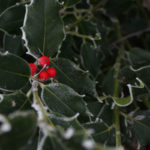Autumn is the easiest gardening season on the West Coast. Usually it is drier than spring and cooler than summer, with the soil just moist enough to easily work. Now is the time to take a good look at your garden and note what worked well, what didn’t, and what changes you may want to make for next spring. It’s a great time to clean up and start over!
Most pruning is done in February, but a few things can be done before winter. Cut back perennials after they die down to tidy up your garden’s appearance. Or dead tops can be left on to protect the base of the plant, though this can make your garden look messy.
Hydrangea and Rudebeckia can be deadheaded or left with their dried flower heads intact, but leave most of the pruning until early spring. This will lessen the impact of winter dieback.
Prune summer flowering shrubs after they finish blooming. Lightly prune Roses to remove any tall branches that may potentially break under the weight of winter snow. Cut off broken or damaged branches from trees and shrubs—this can be done any time of year. Shear and shape small Evergreens such as Boxwood in early September.
Cut back summer flowering bulbs.
Weeds grow year round in our mild coastal climate; however, if you give your garden a good weeding before winter, you will have less to do come spring.
Dig up new beds in preparation for next year and add soil amendments such as sand, peat, manure and compost. Manure doesn’t have much
nutrient value but is helpful for adding water-retaining organic matter when it is worked into the soil. Compost is a great way of adding nutrients to the soil as well as aiding moisture retention; work it into the soil when conditions aren’t too wet.
After perennials have been cut back, put a layer of leaves over the whole garden. The leaves will break down over winter and add nutrients to the soil. It also keeps weed growth down and keeps the soil soft by shielding it from heavy rainfalls. Layering leaves on your garden may look messy so you may consider doing it only in your backyard.
Fruit bushes are best mulched with sawdust. Straw mulch tends to lead to weeds in the spring.
Good garden hygiene can prevent a lot of problems. Thoroughly compile and dispose of any diseased leaves or plants. Any plant with black spot or mildew must have all of its leaves removed. Do not compost mildewed or diseased leaves or plant material.
Cut back perennials to a couple inches. Don’t cut back evergreen perennials such as Heuchera, Sea Thrift and some grasses.
Most perennials can be dug up and divided and replanted. Perennials are rejuvenated from being divided and grow back stronger. As with any type of transplanting, be sure to amend the soil with bone meal and water the plants well before and after planting. If the perennial is very large, you may have to trim off some of the top growth to compensate for root damage incurred during division.
Use two pitchforks back to back to pry large perennial root clumps apart. If the root clump is too solid as with Hostas or grasses, use a saw, knife or axe to cut it apart.
Stop fertilizing perennial beds in fall to discourage soft new growth on plants, since tender new growth is prone to frost damage in the coming winter months.
Protect tender perennials by mulching with leaves and protect shrubs and tender trees by wrapping their tops with burlap or landscape fabric. Cold winter weather and winds will cause Rhododendrons to curl their leaves. Under prolonged assault, young Rhododendrons will drop leaves in spring and excessive foliage loss can to lead to plant damage. Protect young Rhododendrons by placing evergreen boughs or landscape fabric over top.
Pull out self-seeding plants such as Nigella or California Poppy; the parent plants aren’t needed anymore since they have already spread seed for next year’s growth.
Pull out summer annuals once their growth weakens or when you feel like planting some fresh color. Don’t wait too long to replant with fall annuals for fall/winter interest plants such as Pansies need sufficient time to become established before the weather turns too cold.
If you plan to keep containers outside over winter, raise them up on bricks or pot feet so that they don’t end up sitting in puddles and developing root rot. Also move them closer to the house to benefit from its radiated heat. This will help protect plant roots from suffering cold damage.
Dahlias, Cannas, and Callas can be dug up after the first frost. It is best to wait until they dieback a bit before lifting them out of the ground. Let the tubers dry in the sun, then shake off the excess dirt and cut the tops back to about 8” above the tuber. Pack the tubers in peat or shredded newspaper, sprinkle some fungicide dust on top and store them in a dry, cool, well-aerated place. Keep them safe from freezing temperatures and remember to properly label the tubers. Canna tubers can be stored totally dry whereas Dahlia tubers like being stored in a bit of moisture.
Grade through the tubers you dig out and only store thick, healthy ones. Discard rotten, damaged or weak-looking tubers. Tubers can be split now or in the spring. Look for tubers with 2-3 eyes and separate them with a knife or scissors, taking care not to damage the neck or sprouts.
Another option for storing Dahlia tubers is to dig a trench in a warm protected area, insulate it with a layer of leaves, place the tubers inside and then blanket with 2’-3’of leaves. This will encourage the tubers to put out new sprouts for spring and adds nutrients to your soil as the leaves compost. Put out slug traps in early spring to make sure they don’t get to your tubers’ tender sprouts.
September and October are the best months to buy spring flowering bulbs and the best time to plant them is from October to November. Resist the temptation to plant your bulbs too early for a warm week in September or October may cause the bulbs to break dormancy prematurely and begin to sprout, causing the loss of next year’s blooms.
Bulbs should be planted at a depth equal to three times the height of the bulb. Plant them in a sunny spot or at least one where they’ll receive a minimum of half a day of sunlight. Amend the soil with bone meal or bulb food before planting to encourage strong root growth on the bulbs. To plant a large grouping of bulbs, dig a wide shallow hole and then prepare a mixture of bone meal and bulb dust to sprinkle into the hole. Place the bulbs in and then cover with soil.
Always plant bulbs in large groups of 5-10; anything less and you will likely be disappointed with a small, insignificant display of flowers. Remember that not every bulb will necessarily sprout, so you want to plant enough bulbs to make up the difference.
When planting various types of bulbs together do so in layers: place larger bulbs at the bottom, cover with soil, then plant medium-sized bulbs, again cover with soil and then finally plant small bulbs. Place bone meal under each layer.
Try planting bulbs in containers and then submerging them into your garden beds. Once they are done blooming, you can lift the container out and replant the spot with fresh new flowers.
If you have problems with wildlife digging up your bulbs, try planting them in a pot in the ground and then placing a wire mesh and/or rocks over top for the winter. But be sure to take these restraints off before spring.
Protect bulbs from fungal attack by adding bulb dust, which is a fungicide, at the time of planting. It can be sprinkled on the soil around the bulb, or try shaking the bulbs in a paper bag filled with bulb dust to evenly coat each bulb.
Fertilize bulb clumps every fall, for they begin to store energy at this time of year for spring blooming.
Plant small bulbs like Allium, Crocus and Snowdrop around the base of perennials: they don’t need much space and it’s an easy way to add color before the perennials bloom.
Consider creating a “blooming” lawn by adding small bulbs to it. This easily accomplished task will add interest to your winter/early spring garden. Take a pitchfork and make several holes in your lawn about 1.5” deep. Sprinkle bone meal into the holes and place a Crocus or Snowdrop bulb in each one and then cover the hole with sand or soil. Now you will have colorful bulbs growing out of your lawn to brighten your late winter/early spring garden. They should be done blooming by the time you need to mow your lawn.
Plant crocuses and snowdrops where you can see them from your house — they bloom early in the year when you are not likely to be spending much time outside, and yet you should be able to enjoy them.
Once planted, Daffodil bulbs will naturalize (e.g. naturally multiply and flower each year) whereas Tulips are typically best treated as annuals and replanted with new bulbs each year.
Tulips need a cold dormant period. Tulips bulbs receive this treatment before you purchase them at a store so that they bloom for your spring garden. You can leave the bulbs in the ground for re-blooming the following year, but if the weather is not cold enough or not cold for a long enough period, or if conditions are too wet, the bulbs will put on a much poorer show.
It’s easy to force bulbs. Simply take a shallow pot and lay down some rocks or other type of drainage material, add soil, place the bulbs in, and cover with soil so the tips are just covered. Place the pot in a refrigerator for 6 weeks and then take it out and place in a warm spot in your home. Keep the soil moist but not wet, and you should have beautiful blooming bulbs in a few weeks.
Garden Mums need to be planted in a sunny spot or at least one where they’ll receive at least a half-day’s worth of sunlight. Mums can only be treated as a perennial in warm, dry spots, such as near a south-facing wall. If planted in shadier and/or wetter spots, treat them like an annual rather than a perennial. Don’t cut back Mums until they naturally dieback; as long as their foliage stays green, they will feed the roots and help the plant over-winter.
Asters are perennial and will come back every year. However, make sure to pinch them back in summer so you get a bushy, flowering plant in fall. Asters are prone to developing mildew, so plant them in well-ventilated areas.
Pansies and Violas are a popular choice for providing annual color to fall/winter gardens. When choosing what to buy, consider that the smaller Viola blooms are better at weathering rain than the bigger blooms of Pansies.
Ornamental Cabbage and Kale are great decorative foliage plants to color up your fall/winter garden and will hold up until January. After this they tend to go mushy. Remove yellowing lower leaves and leave a gap between the soil surface and the bottom layer of foliage to reduce the risk of rot.
Summer Heather (Calluna sp.):
- blooms September-November
- grows upright to 2’
- many varieties have golden/colorful foliage
Winter Heather (Erica sp.):
- blooms February-April
- spreading habit with height growth up to 10”
- most plants have green foliage
Regardless of whether the Heather is summer or winter flowering, it is important to water the plant well the first couple of years. Once it becomes established, heather requires minimal maintenance.
Fall is a great time to plant trees, shrubs and perennials because the cooler and wetter weather means you don’t have to water them as much and the stress incurred during transplanting is also lessened.
To add some winter interest to your garden, try some of the following ideas:
- leave the seed heads on from Astilbe, Grasses, Sedum, Hydrangea, and Coneflowers
- add plants that carry berries during the winter, or ones with evergreen variegated foliage, or deciduous plants that have a unique form when their branches become bare
- plant unique structural plants to become focal points in your garden
- add evergreen branches and berries to containers
- plant cold-hardy annuals such as Pansies and Kale mixed with evergreen perennials in containers
- invest in some dwarf evergreens to add structure year-round to your garden
- create a winter hanging basket using Ivy, Cotoneaster, Lamium and Euphorbia
- create a blooming lawn (see above for details)
- place ornaments and garden décor where perennials will die down




